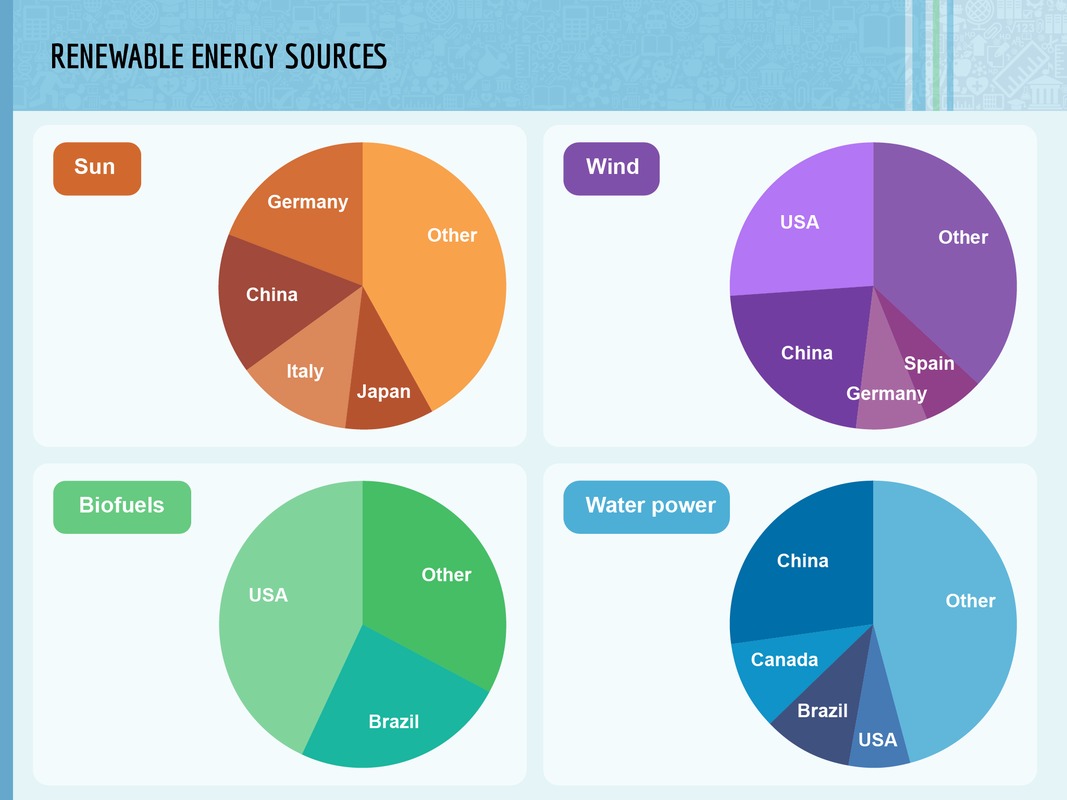9.5 Renewable energy sources
 Because the supplies of fossil fuels is limited, and because their use accelerates climate change, the methods of global energy production need to change.
Because the supplies of fossil fuels is limited, and because their use accelerates climate change, the methods of global energy production need to change.
One way to make energy production more sustainable is to base it on the use of renewable energy sources. These energy sources replenish themselves when they are used, which means that they never run out.
Most forms of renewable energy gain their energy from radiation from the Sun. This radiation can be directly transformed into electricity or used in heating water for service use. The use of solar radiation in energy production is called solar energy. Only one percent of global energy production is currently based on solar energy, but it is the most rapidly increasing form of energy production in the world.
In wind power, electricity is produced with generators. These generators are rotated by the wind, which itself occurs as a result of solar radiation.
| Year | Wind power (mostly electricity production) |
Solar energy (electricity production, heating, warming up water for service use, etc.) |
|---|---|---|
| 2000 | 31 TWh or terawatt hour | 1 TWh or terawatthour |
| 2005 | 105 TWh | 4 TWh |
| 2010 | 340 TWh | 31 TWh |
| 2018 | 840 TWh | 443 TWh |
In water power or hydropower, running water is directed to move through electricity-generating turbines. This process is also based on solar radiation: this is the case, because rivers are formed when the Sun causes water to evaporate to the atmosphere and to rain back down to the surface of the Earth. Water power is currently the most significant renewable energy source in the world. Approximately 7 % of the planet's total energy consumption is covered by water power.
In bioenergy, heat or electricity is produced by burning plant-, animal-, or microbe-based materials. Burning wood in a fireplace is a well-known example of bioenergy. Biogenic materials or biomass can nowadays be refined into other forms, as well. It can be used to produce liquid fuels and biogas, for example.
Geothermal heat and other similar forms of energy are also based on energy that has originally come from the Sun. In these methods, heat from water or air is used to produce thermal or heat energy. Geothermal energy, on the other hand, uses the heat contained inside the planet. Geothermal energy has traditionally been used especially in volcanic areas, such as Iceland, but its popularity is steadily growing in other regions, as well.

The most important producers of renewable energy sources.